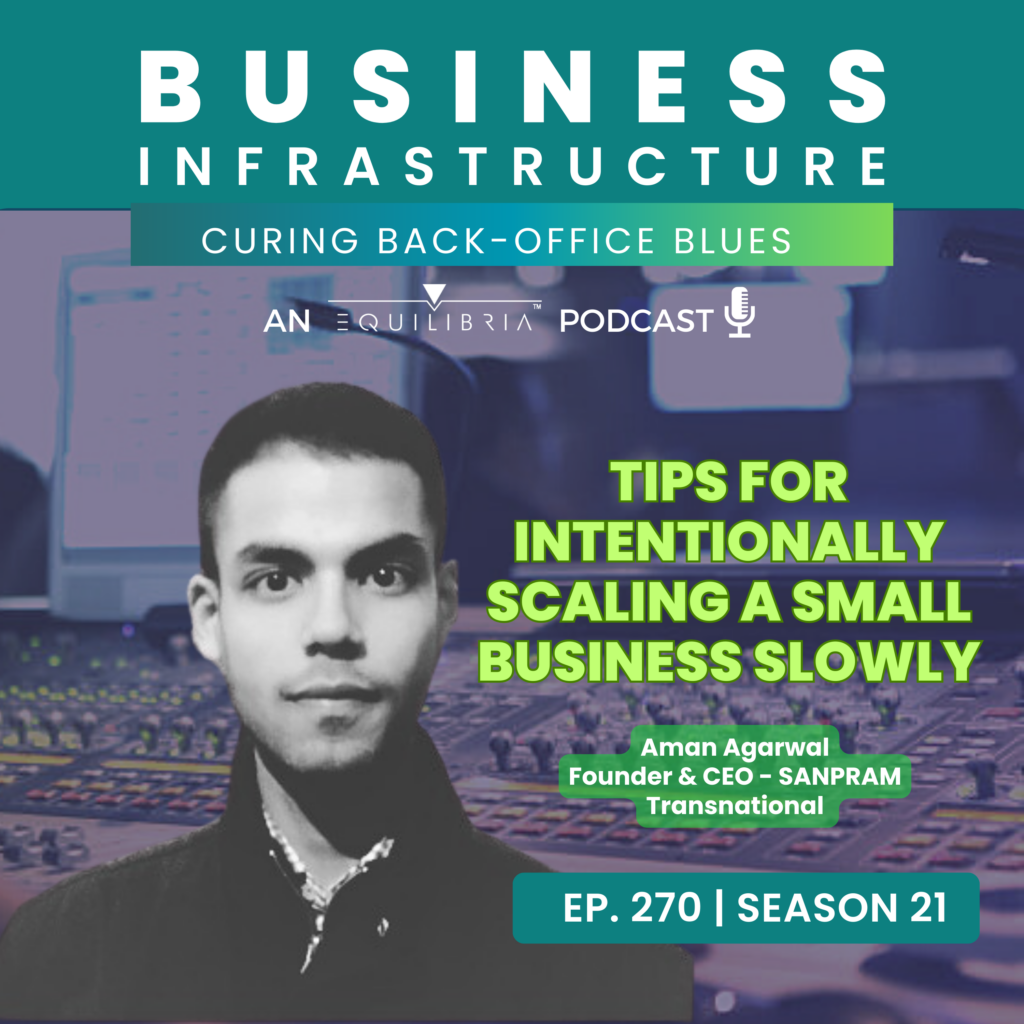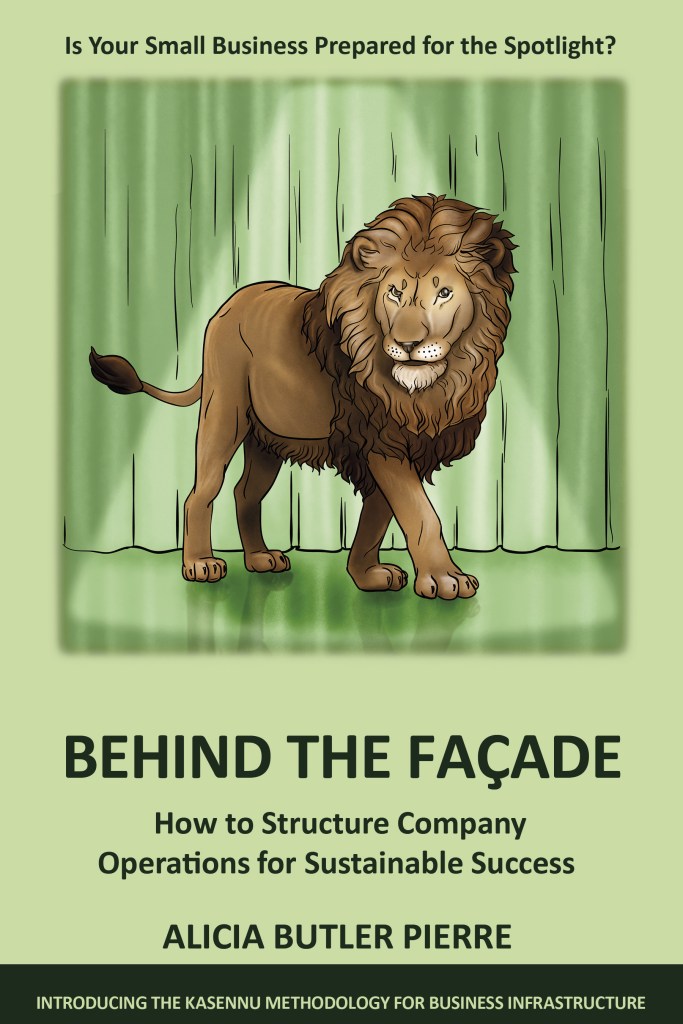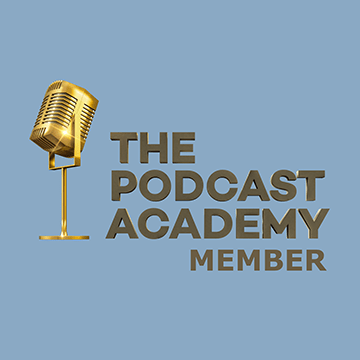Transcript
How’s it going? It’s so good to have you here! Come in. Let’s head over to the podcasting vault. Yes, we have our next remastered episode queued up for you to listen to. I think you’ll be pleasantly surprised at this technologist’s analog approach to scaling a small business.

This podcast is brought to you by Equilibria, Inc. We design business infrastructure that frees you from the chaos of fast growth, scales your operations, and increases the value of your small business.
This is Season 21 of the Business Infrastructure podcast. On this show we share operational tips, strategies, and tactics to help you cure any back-office blues you might be experiencing. I’m Alicia Butler Pierre and this season we’ve remastered some of our most popular episodes using our show’s new format.
Full stack. Tech stack. Python. JavaScript. API. AI. Developer. Programmer. Coder. What on Earth does all of this mean for you and for your business? Well, today’s guest has the answers. In fact, he’s built a successful business that specializes in not only defining these technology terms, but debunks myths surrounding them, too. Whether you like it or not, digital technology is an essential ingredient of any modern-day company’s scale
formula. The real question is, are you ready to program your way to success?
That’s what we’re about to unpack.
This is Episode 270 – Tips for Intentionally Scaling a Small Business Slowly with Aman Agarwal
Aman Agarwal is the CEO of Sanpram Transnational Corporation, a company that specializes in technical fluency. At the time of our original interview, the world was in the height of the covid pandemic and Aman was living in New Delhi, India. He’s now living in Tokyo, Japan. This doesn’t surprise me at all – with his youthful energy he’s a man on a mission. So, how exactly is he doing? Well, let him tell you.
Majestic! Never been better.
Well, it’s not every day that you hear someone say that they are “majestic!” But you know what, this kind of enthusiasm is welcomed in a world where technology can seem complicated, out of reach, and not to mention…scary. That’s why the world needs what Aman and his company have to offer. As business owners and leaders, we have to keep up with the fast pace of digital technology advancements. I thought it’d be helpful if Aman could share how he came to start a company to address this very real concern.
Sure. So, I was an engineer by background, and I worked on self-driving trucks and robot assistants and that kind of stuff in Silicon Valley. And before that I also used to be a B2B sales professional. I was doing enterprise sales for large tech companies. So, I happened to be on both sides of the equation – the technical people and the non-technical people, the sales guys, the marketing guys, the finance guys and so on. And even in Silicon Valley, I noticed that the communication gap is just huge. And this communication gap manifests itself into inefficiencies within the company that people don’t even think about.

When you have to go through five rounds of back and forth and approvals instead of just two rounds because people just speak different languages, and it takes more time to get to the same page. You multiply that with the amount of stuff that happens in a bigger company, and you see thousands of lost hours every year in productivity as well as morale and motivation because either side the salespeople or the engineers and they think the other side is stupid. That’s usually how it goes.
Yes, I’ve been a victim of that.
From which side?
From both sides actually, but recently from the side of the non-technical person. I was rehearsing with some sound engineers for an upcoming virtual conference. To make a long story short, they expressed concerns about my intelligence because I couldn’t figure out how to use the required software. Turns out my computer needed a certain update in order for the software to work. But I remember feeling awful – and it was all because I didn’t understand the software language they were using.
Wow. Yeah, thank you for sharing that. I think it’s so extremely common and people don’t realize that it’s actually abnormal. It’s just very common, you know what I mean? This feeling of this person is stupid because they don’t know what I know.
Right.
That is so stupid in itself. Me personally, because you talk to any expert from any field, whether it’s finance or insurance or just anybody, we are not living in an age where everybody can be a jack of all trades and an expert in everything, right? We are all specialized in our different fields. And so if every person starts to think that everybody else outside of his trade is stupid, then it’s kind of a weird situation that people have accepted as reality. Don’t you think that way?
Yes, and it begs the question…what does technical fluency mean?

I define technical fluency as, number one, being able to have intelligent conversations with engineers, and number two, be able to make high level decisions about technology. And this does not mean that you are an engineer yourself. That’s totally not the case here, because if you take the example of construction, you’re a homeowner. And let’s say you’re building a new house. You hire an architect and a contractor to build it, who are the experts at their jobs. What they expect from you is to tell them, like, “Hey, okay, I’m going to have a family of five, and I need this many bedrooms. I want a kitchen like this with an island in between. I want bathrooms like this.” And you list out all your preferences, and you listen to them, what’s feasible, what would fall into budget. You have a reasonable working knowledge of how a house is built, and how much it costs. You’re not going to say, ”Hey, I just want a place to poop, a place to sleep, and I want a water park in my backyard.”
That is what I mean by technical fluency. It’s not about, okay, I can do the same job as a contractor or the architect. It’s about guiding them and letting them be the expert at their thing, as long as you’re on the same page about what the goals are. Does that make sense?
Hmm…okay, that does make sense. Just that analogy alone demonstrates Aman’s ability to bridge technical communication gaps. I couldn’t help but ask, with such a valuable service offering, what’s his company’s growth strategy?

Yeah. So, for us, we have taken a slightly unconventional approach. And it’s kind of funny because I kind of have a Silicon Valley sort of cultural background where everybody’s about, okay, raise $50 million and spend $40 of those $50 million on Facebook ads and Google Ads, get a lot of users and just grow, grow, grow forever. Scale, scale, scale.
And I decided that for Sanpram, at least for the first two to three years, we are going to limit the number of customers that we’re going to have, which means the only way we scale our business is to scale our revenues through increasing the prices.
We would rather have 50 customers a year, 50 enterprises or 50 individuals, however that mix looks like. And we are only going to engage with those 50 or 40 whatever and give them the highest level of service, keep a sustainable business for ourselves and just live a chill life, figure out what we could do at scale later. But we are going to discipline ourselves into not going after the whole market at once. We are going to discipline ourselves into only making sure that we become the best in the world at what we do
for our customer. And we’re not a B2C company yet. We are a B2B company pretty much. So that’s our model for the first two years. And after that, once we have a solid base, and a solid, predictable revenue stream, we know who our customers are.
Now this is interesting…the growth plan Aman just described is not only strategic, but very intentional, methodical even. I really like his idea of getting really good at something first, figuring out who the customers are, and then scaling that up.
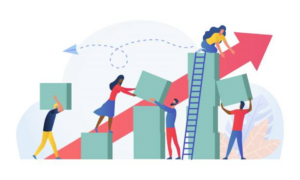
One thing that happens when you scale is that you need to have your business down to a formula where, you know, if I put in this much effort and this much money into these five, six channels, whatever, I’m going to see this much revenue or this much growth as a result of that directly. And of course, it’s not always a linear progression. Scaling means you don’t have to think about it too much. You know exactly what to do. You have a playbook of your own, you hire more people. And, you know, if I hire five more
people who do these 25 things, then I’m going to get these 35 customers and these $50 whatever.
And I really want to take it slow to get to that formula because I could come up with a formula today and say, “Oh, we’re going to go all out and we’re going to double down on this one thing and then we’re going to scale.” But it just makes me physically uncomfortable seeing that I’ve personally experienced so many companies shut down. One of the companies that I worked at myself also shut down, and my first job out of college many years ago, I was responsible for scaling a side business for the company and that also failed because it wasn’t ready to scale. So, I’ve seen the pains that come when you’re trying to sell something that you don’t even know all about.
Preach, Aman! His definition of scaling is being able to get your business down to a formula, developing a playbook around that, and replicating it. And just to make sure we’re clear on this, he offered another perspective on scaling.
I could go on a different direction. If I wanted to scale from day one, what I would do is I would make a prerecorded full packaged course, put it online and put a price tag on it and then invest in ads or Facebook, whatever to get those sales know. That’s what scaling from day one looks like. Where you invest in a piece of content or whatever and then you just push it out and then you add fuel to the fire. But I realized that if I went down that route, I would never build a global brand for my company. It would always be one more course online that someone can purchase. And then on Black Friday you add a 90% discount. It’s not a sustainable business.
Some people can do that and have a sustainable business. They become their own little brand. But for me, seeking out executives and trying to change the way business is done and spreading out the message of technical fluency and it’s more about the message than the course because I can only talk about digital technologies. I’m not an expert in construction or mechanical engineering or nuclear engineering, whatever, all the things that are going out in the world. If I’m trying to attack a bigger problem, it’s a much longer road for me.
It sounds like Aman is playing the long game when it comes to growing his company. This made me curious about his plans to build business infrastructure along the way. That is, who are the people, what are the processes, and what technologies are required to meet his strategic growth plan?

Before I go into the specifics, the overarching theme at Sanpram so far is that it is surprisingly the polar opposite of the world I come from. So, me being a very tech guy, I’ve intentionally kept things very low-tech. So surprisingly, I am the only full-time employee at Sanpram.
And everybody else who works on Sanpram is part-time, and they have other things. So, for example, one of them is a Ph.D. in literature at Princeton, and she is actually spearheading a lot of the marketing efforts. Sometimes she works more per hour and sometimes more per week and sometimes less. But that’s kind of true for most of the people I work with. It takes me a lot to bring someone on full-time in Sanpram.
And there’s a reason for that. Remember, Aman’s playing the long game. That is, he’s taking the necessary steps now to set his company up for long-term success.
It’s somewhat intentional and somewhat unintentional, but I just want to make sure that if someone joins Sanpram, they’re going to be with Sanpram for 20 years. That’s my outlook. And the company should be big enough that they can grow. And if they get bored of one thing after one year, I should be able to say, ”Hey, you’re not doing well. We have ten other things that you could do. Why don’t you try this instead of leaving the company?”
A lot of people these days move jobs pretty quickly because at the company that they work in, they only have one job that they could do, and if they don’t like that job, they have to leave. For me, it’s more about relationship building. For example, Lisa, who is the marketing manager that I mentioned, I would rather have her experiment and try and be part-time and work here. And if she realizes that she wants to be full-time, it’s a long-term decision of whether they want to commit. It’s like a relationship, so to speak, between the company and the person. And with companies personally, I don’t want to be in short-term relationships.
I feel you on that one, Aman. As small business owners, we have to get it right the first time when it comes to hiring people. Payroll is often one of the largest expenses for a business, so high turnover can be devastating.
And one more thing to that is the type of work that we have at Sanpram. All the automated, regular, task-based stuff like accounting and those things, they’re easily outsourced. The thing that really makes Sanpram valuable is the creative work. We are students of teaching. We are students of our trade, and our trade is teaching. How do we teach in the best way? We are actually an education company that just happens to focus on technical fluency at the moment.
And so, with the creative work, when we are trying to come up with new ideas, if you have, let’s say, one expensive person and you are kind of relying on them to come up with all your creative ideas, they can burn out pretty quickly because you don’t have a lot of projects that they can divert themselves with. For me personally, I’m writing a book. I cannot write more than two to 3 hours a day in general because then I run out of ideas, and I burn out and I need to do something else. So, by not having somebody full time
on a creative position, I can have many more people, like five people instead of one, work on different creative projects for San Pram and we have much more fresh ideas, and much more throughput.
Did you notice that Aman said that he really owns an education company that just happens to focus on technical fluency? This reminds me of what I learned in business school – that McDonald’s is really a real estate company that happens to sell burgers and that Coca-Cola is really an advertising company that happens to sell sodas. Having this type of clarity in his business, I wondered if Aman could share a little more about the processes he’s using to grow his company.
So I am, in fact, all about process over progress over perfection. That’s like the three P’s that I like to say.

What does he mean by that – process over progress over perfection? You’ll soon find out after this break.
In the world of business, success isn’t just about great ideas or products. It’s about having a strong foundation—a solid business infrastructure. But why is it so important?
A robust business infrastructure is like the backbone of an organization. It provides the necessary support for all our operations.
Business infrastructure ensures effective communication and collaboration. It allows teams to seamlessly share information, work together efficiently, and make informed decisions.
It also enables efficient data management. With proper systems in place, businesses can securely store, analyze, and utilize their data to gain valuable insights and make strategic decisions.
Thirdly, a strong business infrastructure promotes innovation and growth. It provides the flexibility to scale up operations, adopt new technologies, and adapt to changing market demands. It’s no wonder why a solid business infrastructure is essential for success. It enhances communication, facilitates efficient data management, fosters innovation, and enables flexibility—all vital for businesses to thrive in today’s
competitive landscape. Invest in a strong business infrastructure, and watch your business reach new heights!
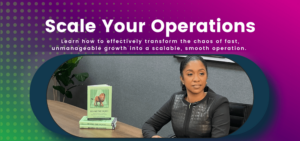
At Equilibria, we’re excited to offer a free webinar opportunity where we’ll do a deep dive into business infrastructure. Stop being a victim of unmanageable fast growth and start building your own company’s business infrastructure. Don’t wait! Experience the order and calm that thousands of other small businesses have. Sign up now at SmoothOperator.Club. That’s SmoothOperator.club.
Welcome back. Before the break, technologist turned educator Aman Agarwal was about to share the processes he uses to build a business infrastructure to support growth at his company, Sanpram. He mentioned his three Ps – Process over Progress over Perfection. What does that mean? Here’s Aman.
So, perfection is why don’t I have six-pack abs today? Progress is that I’ve been working out for three months. Why don’t I see a two pack and process is that I show up at the gym and I did my ten crunches today and I’m golden. I’m going to feel good about myself because I followed the process for today and the next day, I’m going to do it again and I’m going to worry about the two pack after it’s been too long and I’m not seeing any progress that’s like the three Ps.
I love that!
In terms of process, we basically have really clear delegation. And it may not be the answer you were looking for. The process is basically we have a few cultural values so for example, if I give someone a responsibility to do something, I’m going to fire myself from that job from then on, unless they want help. And so, the idea of firing yourself from a job that you have given to somebody else is a way of showing them respect, giving them power and reducing the friction. This is like the plague in the arteries of a company when you delegate, but not really, you know what I mean?
Yes.
You don’t really give them ownership and so they feel afraid of taking ownership on their own and simply reminding myself of doing that. That is my process. So, every day when I’m having a meeting, or when I’m preparing for a meeting with one of my teammates, I have to literally write down or remind myself in some way that I’m not here to do their job. If they ask me for help, they ask me for help or pointers or advice, my goal is for them to do their job better. And maybe that’s not a real process, but it’s the way I think about processes. It’s the unwritten words that make up the process.
I don’t know about you, but I find it really interesting the way Aman just described his process for, well, processes. I agree with him – it’s so tempting to want to correct something that you’ve delegated to someone else, but you have to resist that temptation. It’s kind of like working with young children learning to walk. Sometimes you have to let them fall because only in falling will they eventually learn how to walk on their own.
Absolutely! That’s actually so important. I could not agree with you more on how tempting it is. And this is why in our five-point cultural values, they’re pretty simple, but the fifth one is Nothing to Lose. And so, making mistakes is totally fine. And I have to remind myself before some meetings, or during some meetings, when somebody says, “Hey, I wrote this new email template that’s going to go out to a lot of people, you have a lot of experience.”

I used to be a sales guy, so I naturally know my way around emails. “Can you help me improve this template?” And I’ll look at the template and I’ll think to myself How I would change it, but I have to literally, physically slap myself on the wrist or hold my finger and just say, “Yeah, I think it’s okay but have you thought about this direction that you could take in? Or I can give you some high-level guidelines that you could follow.”
And sometimes you have to spend the next five days coming up with seven different iterations, seven different versions of this email template, and show them to me instead of me saying, “Yeah, I think fix those three lines and four lines and it’s all going to be set.” Like, I have to literally delay the email going out because I know that’s less important than if I make that mistake once where I tell them what to do or if I tell them “Yeah, that’s wrong, I’m going to fix it for you.” We don’t realize how far the repercussions
go.
Yep, that’s true. With everything Aman shared about his formula for scaling, the intentional way he’s growing his team, and the way he captures processes I realized he was defining the business infrastructure for Sanpram all along. There’s just one element missing so I asked if he could talk to us about the tools they use to support their growth.
We’re an education company. We are not heavily tools based as some of the tech companies. I do like to use Airtable. I like Airtable’s approach to spreadsheets and databases more than I like a raw spreadsheet on Excel or Google. That’s the most fancy tool that I use. And for the course itself, we work with very few customers. So, we’re happy to adopt new tools to suit the customer and remember that the tool is not like the headmaster of the company with a stick in hand. The tool is supposed to help us serve our customers better.
And so, the tool can never become a constraint on how we serve customers. Our own values and beliefs can act as the constraint, but not the tools that we use. Sometimes customers don’t want to use Zoom, they don’t want to pay us through a certain platform. We’re pretty flexible on the tools that way for most external stuff. And internally is just email and Airtable and Zoom and Google Calendar like everybody else uses.
Now that we know more about Aman’s company’s back-office operations, I encouraged him to talk about their customer-facing product. It’s called the Advanced Technical Fluency program.
We offer a program called Advanced Technical Fluency. It’s the world’s first such program of its kind. We help business leaders and non-technical entrepreneurs learn how to build and scale tech companies and learn about how to design systems without learning to code, which is the important part. We focus on the knowledge and the real skills that you need to hire and manage engineers, speak intelligently with them, and design systems with them, side by side, instead of turning you into a mediocre junior engineer that nobody needs. Sorry, was that too harsh?
That’s funny! But I get his point. Aman is also a columnist on Medium.com where he writes articles on this very topic of technical fluency.

Just visit Sanpram.com, the company website, and literally, the first thing you see on the homepage is the Medium articles. And I think that’s the best place to start for anybody listening who wants to get some free knowledge, really high quality, free education before they can decide whether the program or anything we do is for them or not.
Once you’ve listened to this episode, read his articles, and you’ve decided you’re in! You want more information, Aman has suggestions for contacting him directly.
Yeah, for me, it would be LinkedIn, and I keep my DMs open so that anybody can message me.
Well, Aman, our time is up here. It’s been such a pleasure getting to know you. Thanks for coming onto the show!
Thank you so much for having me!
Let’s give it up for Aman Agarwal! We’ll have links to Aman’s company, their Advanced Technical Fluency program, his Medium articles, as well as other resources he mentioned at BusinessInfrastructure.TV. Again, that’s BusinessInfrastructure.TV.
Thank you for listening! If you enjoyed this episode, then please subscribe and leave a five-star rating and review.

We’re fast approaching the end of this season. In fact, we have one more remastered episode to share with you for this season. For now, it’s time to leave the podcasting vault. Let’s head toward the front door. Before you leave, make sure you subscribe to this show so that you’ll know when to come back and listen to our next remastered episode.
Until then, remember to stay focused and be encouraged. This entrepreneurial journey is a marathon and not a sprint.
This podcast was written, produced, and narrated by me, Alicia Butler Pierre. Audio editing by Olanrewaju Adeyemo. Original score and sound design by Sabor! Music Enterprises.
This is the Business Infrastructure – Curing Back-Office Blues podcast.


